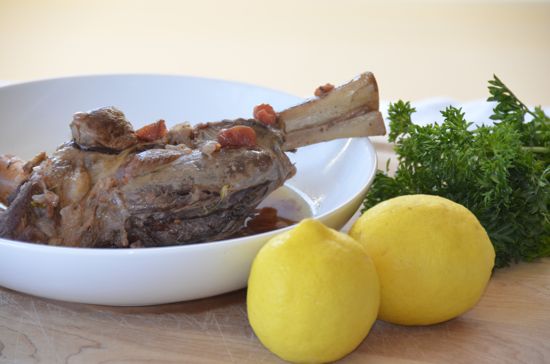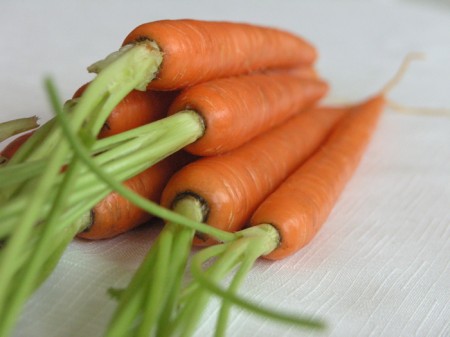
Last weekend, I decided that my own back-to-school supply should be a new slow-cooker. I had a crock pot already, but I needed something that was larger and more programmable. So I purchased an All-Clad Slow Cooker similar to the one pictured here (and available at Amazon.com). I actually bought the one just larger than this one and it’s huge. I wanted to be able to make entire roasts in it.
Today, I am making one of my favorite slow-cooked dishes: braised lamb shanks. Lamb shanks, with marrow filled bones, and a layer of fat, are perfectly suited for slow-cooking. I think it might be impossible to overcook a lamb shank. The long cooking time simply works to make it extremely tender and falling off the bone.
This version of braised lamb shank is inspired by ossobucco recipes. It includes wine, tomatoes and is finished with a gremolata. Gremolata is a bright, flavorful mixture of lemon zest, parsley and minced fresh garlic. Adding this mixture at the end brightens up the long-cooked dish.
The best thing about the All Clad Slow Cooker is that the insert is stove ready, so you can brown food before setting it to cook for the rest of the day. This is a key step when making braised lamb shanks. I browned these shanks in batches, then added olive oil and onion, sautéeing the onion a bit before replacing the insert to the slow cooker for the rest of the cooking time.

- 3 large lamb shanks or 4 medium ones
- 2 Tbsp olive oil
- 1 large, sweet onion, diced
- 2 cloves crushed garlic (I used Trader Joe's frozen crushed garlic)
- 2 cups mini carrots
- 2 Bay Leaves
- 2 large sprigs of fresh rosemary
- Salt and pepper to taste
- 1 cup red wine
- ½ 14.5 oz can diced tomatoes
- Zest of one lemon
- ⅓ cup chopped parsley
- 2-3 cloves garlic, minced
- Heat the slow-cooker insert over medium high heat (or use a skillet or dutch oven). Add lamb shanks, one or two at a time, and brown on all sides. Remove from pan and brown in batches to avoid over crowding.
- Remove shanks and add olive oil. Add diced onion and garlic. Toss to coat. Let sautée until wilted and starting to brown. Add shanks back in and return insert to the slow cooker.
- Add carrots, Bay Leaves, rosemary, salt, pepper, and wine and toss to combine. Add tomatoes and toss. Cover and cook on low heat for 8 hours or high heat for 4 hours.
- Serve over mashed potatoes, or noodles, or even rice. Garnish with the gremolata.
- To make the gremolata, simply mix together the lemon zest, chopped parsley and minced garlic.
So, why the image from the movie, you ask? Well, it’s just a pun I thought of a long time ago and always wanted to build a recipe around. What are your favorite movie title pun memes?

And finally today, this video of Jamie Oliver’s Britain features the tastes of York, which means of course, Yorkshire pudding. There’s also an interesting lamb shank recipe in this video, which draws more heavily on Moroccan flavors. He uses fresh mint instead of fresh parsley and even makes a mint oil to garnish his lamb shanks.
The other great tip he imparts is to use an immersion blender to blend the sauce leftover in the slow cooker once everything is finished cooking. Blend it and then thicken it by simmering it down over the stove. Perfection.






